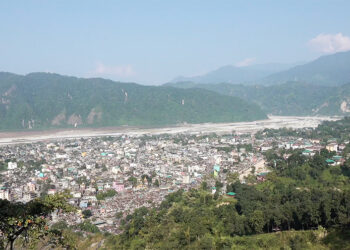 Legalising the collection of Cordyceps has enhanced the livelihoods of many Bhutanese people, especially those people living in the higher altitude areas. But collecting it is not an easy task.
Legalising the collection of Cordyceps has enhanced the livelihoods of many Bhutanese people, especially those people living in the higher altitude areas. But collecting it is not an easy task.
Our reporter, Eshori Gurung, who recently visited Lingzhi says most of the villages under Lingzhi Dungkhag are empty at this time of the year. Young men and women have left for the mountains in search of the Cordyceps. Only the old and young ones have been left behind.
Deki Yangzom has been collecting Cordyceps for the last five years. This time too she is going to collect the Cordyceps. She earns not less than Nu. 200,000 every season. But that does not come easy, as they have to risk their lives at times.
“We go out for a month in a group comprising of five to six people with rations. We also take horses depending on the distance and the mountains we have to cross,” she says.
Some people even lock their homes so that they can go to collect the Cordyceps. Kinley Dem, 50, decided to stay back. But she says she will have to worry for her family members’ safety until they return home. “While going for collection, sometimes it snows and rains, which makes it difficult to make fire. Females will suffer especially if they are not able to keep up the walking pace with males.”
She adds, the earning from the sale of Cordyceps is good but they have to go through a lot of hardships for that.
Kezang Choden says when the men are gone to collect the Cordyceps, women who stay back land up doing all the odd jobs. “We try to do the jobs ourselves, but if they are needed we contact them through mobile and ask them to come back.”
Once you reach the mountains, it’s not easy to find Cordyceps, collectors say. They say it depends on individual luck. Sometimes they get just one or two in a day and at times they even get hundreds of it. They are, however, expecting for a relatively better collection this year. Last year, the price of Cordyceps ranged between, Nu. 400,000 and Nu. 4,50,000 for a Kilogramme.






